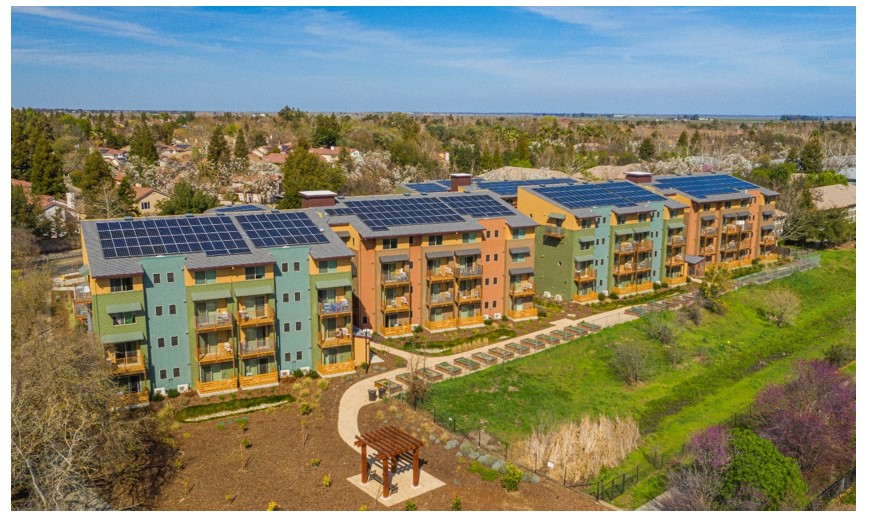 Project Title
Project Title
Evaluation of Unitary Heat Pump Water Heaters with Load-Shifting Controls in a Shared Multi-Family Configuration
Project Number ET18PGE1901 Organization PG&E End-use Water Heating/DHW/HPWH Sector Residential Project Year(s) 2018 - 2022This study evaluated the performance of unitary heat pump water heaters (HPWHs) operating in a shared configuration (each unit served four apartments) in an affordable all-electric multi-family project located in Davis, CA. The shared configuration allowed the HPWHs to be placed in close proximity to the neighboring apartments being served, eliminating the need for any hot water recirculation system. The study included both detailed field monitoring over an 18-month period as well as development of a detailed modeling tool for evaluating annual operation under both fixed water heater set point control and load-shifting control strategies which allow for the HPWH to bias operation to mid-day (pre-peak) hours where significant photovoltaic resources are available, with resulting load-reduction during utility on-peak hours later in the day.
Key project findings are presented in terms of the monitored field results, model development and validation, annual modeling result projections (energy usage and associated carbon emissions), installed cost comparisons, observed operational issues, and recommendations for future work.
High level project conclusions include:
- The shared configuration (where one 80-gallon HPWH per four single occupant apartments replaces individual 50 gallon units per apartment) offers reduced construction costs, reduced energy usage and carbon emissions, and lower water heating utility costs at the expense of higher likelihood of hot water runouts due to coincident hot water loads.
- Load-shifting operation biasing HPWH operation to mid-day periods with high renewable generation on the electrical grid was found to be very effective in shifting load off the 4-9 PM peak period during the summer periods but challenging in the winter when higher hot water loads challenged the unit’s ability to pre-heat storage without significant HPWH resistance heating operation. Although load-shifting was found to be effective in shifting HPWH electrical consumption off-peak, overall energy usage and utility operating costs were generally higher.
- The HPWHs were initially installed in cramped closets (adjacent to the apartments) with a high degree of evaporator exhaust air recirculation. Ducting was installed prior to the project monitoring phase which significantly improved HPWH performance relative to the unducted case.
Future projects should focus on refining the design and control of these systems. Important topics include 1) identifying the optimal number of dwellings and storage capacity of HPWHs in different climates, 2) evaluating other industry communication protocols that were developed during this project, 3) assessing and refining the HPWH controls to yield optimal energy cost and carbon emission benefits, and 4) better understanding the performance implications of different closet and ducting configurations as they apply to both multi-family and single family indoor water heater retrofit applications.
Keyword Search:
Creekside, Load Shifting, MF, DHW, HPWH, Decarbonization, Multifamily, Water Heater, Hot Water, Field Assessment, flexi-hpwh, HPWH simulation tool, API, Application Programming Interface
